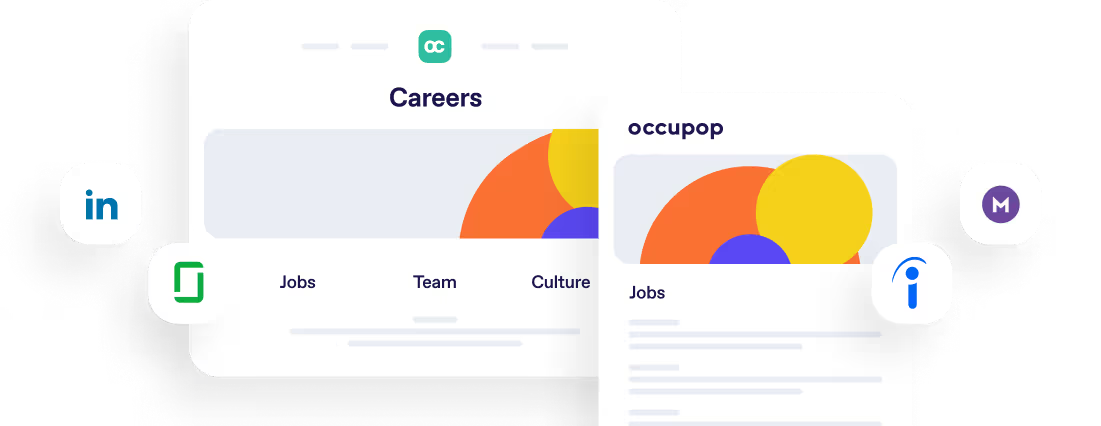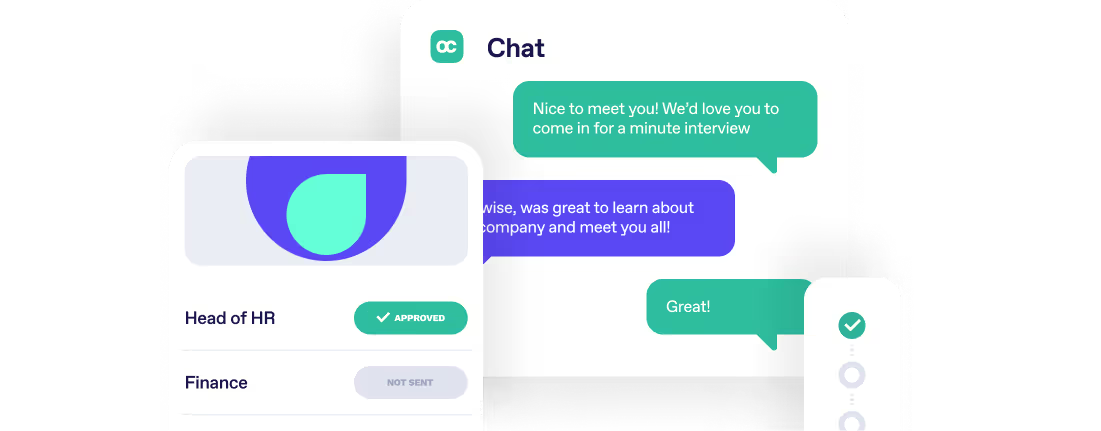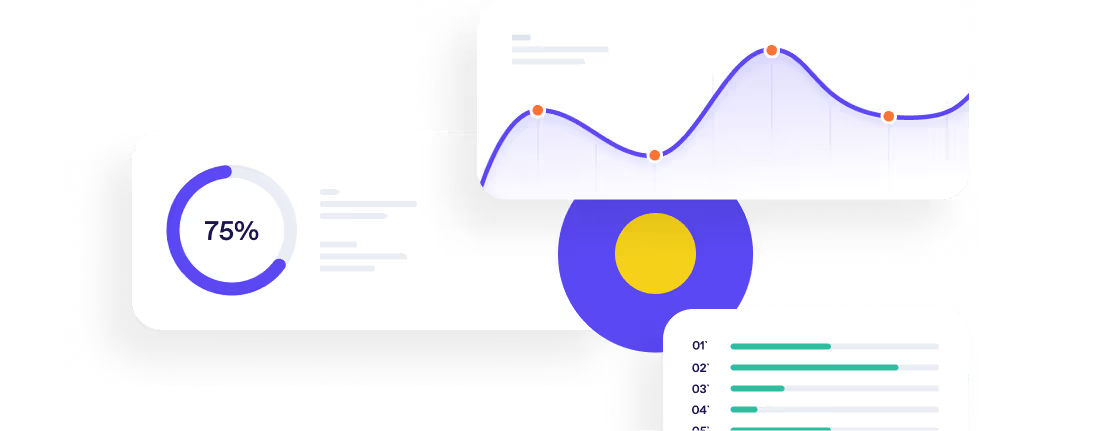How Can Businesses Overcome the Digital Skills Gap?



This article explores the essence of digital skills, the reality of the digital skills gap, and actionable strategies for businesses to close this gap, with a particular emphasis on the importance of training for employee development. By fostering a culture of continuous learning and utilising the right tools, such as Occupop's elegantly simple recruitment software, companies can future-proof their workforce and secure sustained growth.
What are Digital Skills?
Digital skills cover a wide array of capabilities that enable individuals to effectively utilise digital technologies. These skills range from fundamental computer literacy to advanced proficiencies in data analytics, digital marketing, and software engineering. In the current digital-first landscape, equipping your workforce with these skills is not merely beneficial; it's imperative.

What is the Digital Skills Gap?
The digital skills gap refers to the discrepancy between the digital competencies that employers require to stay competitive in the digital economy and those that the workforce possesses. This gap is a growing concern for businesses across all sectors, as it impedes innovation, growth, and the capacity to respond to changing market demands.
A survey by McKinsey found that 87% of companies worldwide are already aware they have a digital skills gap or will have one within a few years. This stark statistic underscores the urgency of addressing the issue.
How does the Digital Skills Gap Affect Employers
For employers, the digital skills gap can lead to reduced operational efficiency, diminished competitiveness, and obstacles in innovation. The lack of ability to harness new technologies can also result in missed opportunities to engage with new customers and enhance service offerings.
What has Caused the Digital Skills Gap?
The digital skills gap, a growing concern for modern businesses, is not a result of a singular cause but a confluence of several dynamic and interrelated factors. Below, we delve deeper into the primary causes contributing to the widening of this gap, highlighting the swift pace of technological advancement and the evolving demands of various industries among other pivotal elements.

Swift Pace of Technological Advancement
One of the most significant contributors to the digital skills gap is the relentless pace at which technology evolves. Innovations such as artificial intelligence (AI), machine learning, blockchain, and the Internet of Things (IoT) are advancing rapidly, reshaping industries and job functions in the process. These advancements require new skills and knowledge, often at a pace faster than the workforce can adapt. For instance, the proliferation of AI and automation technologies demands proficiency in new programming languages, data analytics, and machine learning models, skills that were less critical a decade ago. This rapid technological progression creates a scenario where the skills acquired by the workforce become outdated much more quickly than in the past, leading to a significant skills mismatch in the labour market.
Evolving Demands of Different Industries
The digital skills gap is further exacerbated by the diverse and evolving demands of different industries. Each sector has its unique digital transformation journey, influenced by factors such as customer expectations, regulatory requirements, and competitive pressures. For example:
- In the financial services industry, the rise of fintech and digital banking has created a demand for professionals skilled in cybersecurity, blockchain technology, and digital customer experience management.
- The healthcare sector is increasingly reliant on digital health technologies, requiring skills in health informatics, telemedicine, and electronic health records management.
- Retail businesses are transforming through e-commerce and digital marketing, necessitating skills in online sales platforms, digital advertising, and customer data analytics.
These industry-specific demands contribute to the skills gap by creating a highly segmented labour market where the need for digital skills outstrips the supply of trained professionals.
Education and Training Mismatches
Another critical factor is the misalignment between the education system and the rapidly changing job market. Traditional educational institutions often struggle to keep pace with the latest technological trends, resulting in a lag between what is taught and the skills that employers need. Furthermore, there's a noticeable gap in soft digital skills, such as digital literacy, problem-solving in a digital context, and digital project management, which are increasingly important across all job roles.

The Lag in Corporate Training and Development
Companies themselves can sometimes be slow to recognise the changing skills landscape or invest adequately in training and development. This reluctance or delay in updating training programs to include new digital skills can widen the gap, especially for existing employees. Organisations that fail to prioritise continuous learning and upskilling opportunities may find their behind as technology progresses. The rapid technological changes require not just initial training but ongoing education to keep skills relevant and employees productive. Without a commitment to fostering a learning environment and providing access to training in emerging technologies, companies risk exacerbating the skills gap within their own workforce.
Encourage Employee Learning
Finally, there is often a lack of clear pathways for individuals to acquire new digital skills. While online platforms and vocational training programs offer avenues for learning, individuals may find it challenging to identify which skills are most in demand, where to acquire these skills, and how to validate their new competencies to employers. Cultivating a culture that values continuous learning and personal development can significantly mitigate the digital skills gap. Encouraging employees to seek further education and offering incentives for skill advancement can foster a more adaptable and skilled workforce.

What are the Best Online Learning Platforms?
Supporting continuous learning is essential, and online learning platforms are instrumental in this effort. These platforms offer a plethora of courses covering a wide range of digital skills, from basic computer literacy to advanced software development. The best online learning platforms provide accessible, flexible, and comprehensive educational resources to meet the diverse learning needs of employees.
Some notable platforms include:
- Coursera: Partnering with universities and companies globally, Coursera offers courses across a wide range of digital skills, including data science, computer science, and digital marketing.
- Udemy: With a vast catalogue of courses, Udemy provides learning opportunities in nearly every digital skill imaginable, from web development and programming to digital marketing and graphic design.
- LinkedIn Learning: Previously known as Lynda.com, LinkedIn Learning specialises in professional development, offering courses in software development, network and security, and creative technologies.
- edX: Founded by Harvard and MIT, edX offers university-level courses in a wide range of disciplines, including computer science, engineering, data analysis, and more.
- Khan Academy: Known for its free courses, Khan Academy provides learners with foundational knowledge in computing, including computer programming and computer science principles.
- Pluralsight: Focusing on tech and creative skills, Pluralsight offers a vast library of courses aimed at software developers, IT administrators, and creative professionals.
- Skillshare: This platform focuses on creative skills, including graphic design, photography, and web development, but also offers courses in business analytics and marketing.
- Codecademy: Dedicated to teaching coding skills, Codecademy offers interactive courses in web development, programming, data science, and more.
insert-cta
How to Attract and Retain Digital Talent
To attract and retain digital talent, businesses must adopt a strategic approach that extends beyond offering competitive salaries. Highlighting a commitment to professional development, providing career advancement opportunities, and cultivating a positive workplace culture can make a business more attractive to digitally skilled professionals. Additionally, using efficient recruitment tools like Occupop can simplify the hiring process, ensuring that companies connect with the right talent to address their digital skills gaps.
In closing, addressing the digital skills gap is essential for businesses aiming to excel in the digital economy. Understanding digital skills and the factors contributing to the gap allows companies to implement effective strategies to enhance their workforce's capabilities. Emphasising training and development, fostering a culture of continuous learning, and leveraging top online learning platforms are crucial steps in narrowing the gap. With tools like Occupop, businesses can streamline their recruitment processes, attracting and retaining the digital talent necessary for future success.
For insights into the technology investments that can attract a younger, tech-savvy workforce, consider Occupop's guide on technology investments for attracting a younger workforce.
Summary Points
Closing the Digital Skills Gap: Strategies for a Future-Ready Workforce
- Digital Skills Defined: Encompasses a broad range of abilities from basic computer literacy to advanced data analytics and software engineering, crucial in today’s digital-first environment.
- The Gap’s Impact and Causes: A growing discrepancy exists between the digital skills employers need and what the workforce offers, driven by rapid technological advancements and evolving industry demands.
- Education and Training Mismatches: Traditional education and corporate training programs often lag behind the rapidly evolving digital skill requirements, contributing to the gap.
- Fostering Continuous Learning: Cultivating a culture that values continuous learning and leveraging online platforms for education can significantly reduce the digital skills gap.
- Strategies for Talent Attraction and Retention: Beyond competitive salaries, emphasizing professional development, career opportunities, and a positive culture helps attract digitally skilled professionals.
- Role of Efficient Recruitment Tools: Utilizing platforms like Occupop can streamline hiring processes, enabling companies to effectively close the digital skills gap and foster long-term innovation and growth.
Simple. Beautiful.
Recruitment Software.
HR updates sent straight to your inbox
You might also like...


Manage your entire hiring process simply, from engagement to management, hiring and onboarding







Simple. Beautiful.
Recruitment Software.
Recruitment Software.






